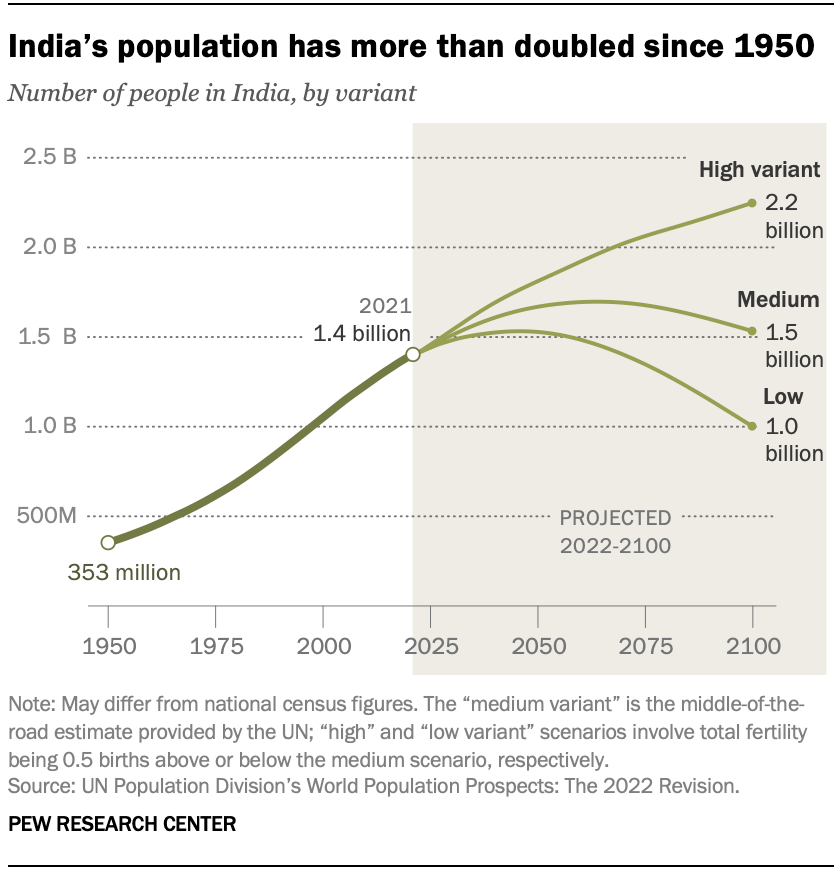How Will India's Population Growth Impact Its Future?
India’s population is projected to experience significant growth in the coming decades, with various estimates indicating a peak and subsequent decline. Here are the key projections and trends:
Population Growth Projections
-
Continued Growth Until 2050: India’s population is expected to continue growing for the next three decades. By 2050, the United Nations projects that India’s population will reach approximately 1.67 billion (166.8 crore) people, making it the most populous country in the world, surpassing China’s projected population of about 1.31 billion (131.7 crore) at that time.
-
Peak Population: According to some estimates, India’s population could peak at around 1.7 billion by 2064 before beginning to decline. This peak is attributed to the phenomenon of population momentum, where a large cohort of young people, born during periods of higher fertility, enters reproductive age, sustaining population growth despite declining fertility rates.
-
Long-term Decline: Following the peak, India’s population is expected to decline gradually. Projections suggest that if fertility rates continue to drop, India’s population could fall to about 1 billion by 2100 under a low variant scenario, while a high variant scenario could see it surpass 2 billion by 2068.
Demographic Changes

-
Aging Population: By 2050, it is anticipated that one in five Indians will be elderly, highlighting a significant demographic shift towards an older population. The elderly population is expected to nearly double to 192 million by 2030.
-
Youthful Demographics: Despite the aging trend, India will still have a substantial young population, with over 40% of its population under the age of 25. This demographic can provide economic opportunities if adequately supported through education and employment initiatives.
Implications of Population Growth
India’s population growth presents both opportunities and challenges:
-
Economic Growth Potential: With a large youth demographic, India has the potential to harness this workforce for economic growth and innovation, positioning itself as a key player in the global economy.
-
Challenges of Sustainability: Rapid population growth raises concerns about resource management, environmental sustainability, and equitable wealth distribution. Addressing these challenges will be crucial for ensuring that economic growth does not come at the expense of social and environmental stability.
In summary, India’s population is set to grow until around 2050, after which it will likely peak and begin to decline. The demographic shift towards an older population, combined with a significant youth cohort, will require strategic planning to maximize economic benefits while addressing sustainability challenges.
Citations:
- NDTV - India’s Population Expected to Rise Till 2050 and Then Decline: UN
- Pew Research - Key Facts as India Surpasses China as the World’s Most Populous Country
- Worldometers - India Population
- UNFPA India - India’s Population Growth and Policy Implications
- UNPD - The Future of Human Fertility in India
- Axios - India, China Population, Economy, Trade, Workers
- UN DESA Policy Brief PDF
- UN DESA Policy Brief - India Overtakes China as the World’s Most Populous Country
comments powered by Disqus